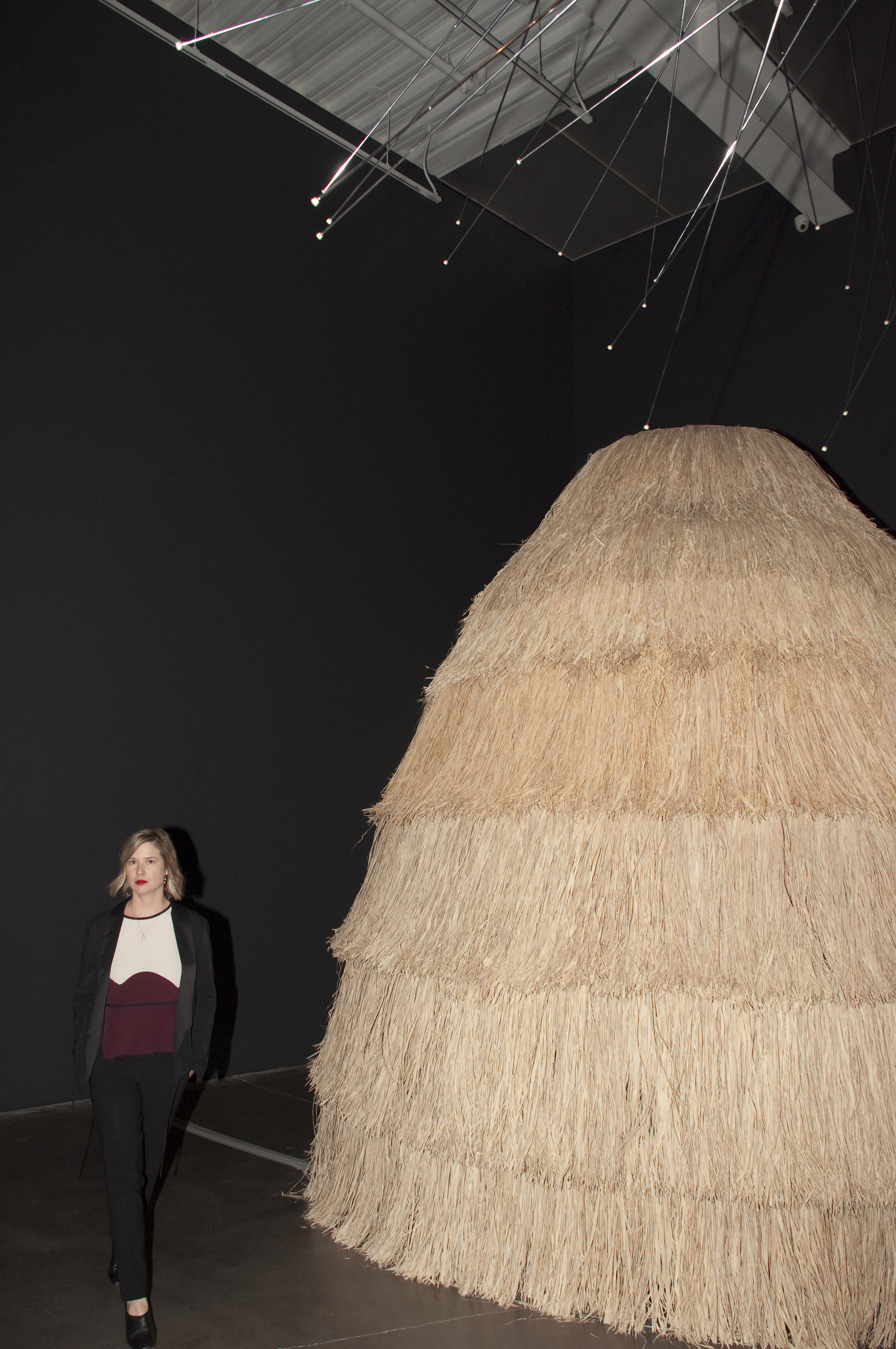
“In a way I feel like I’ve been working on this exhibition my whole life. It is a culmination of a lot of thinking that I’ve done,” says curator Johanna Burton of “Trigger: Gender as a Tool and a Weapon,” an exhibition on view at the New Museum that continues the institution’s legacy of presenting radical ideas on gender and sexuality. “There’s a lot of feminism embedded in this show and a lot of postcolonial and queer theory, but it is also a response to what I feel like is an emergent set of terms that have been percolating for a while, and have started to be acknowledged in the past few years—but without even a language.”
Sitting in the lobby café of the New Museum—where she has been the Keith Haring Director and Curator of Education and Public Engagement since 2013—Burton has a quiet magnetism. Artists and friends greet her with the casual warmth one might show a favorite teacher. Perhaps her disposition, at once authoritative and kind, is a result of Burton’s humble and unconventional Nevada upbringing. The first student to graduate from the University of Nevada, Reno with a degree in art history, Burton spent her college years in the library reading feminist magazines like off our backs. “As a kid in Nevada I would write lists of all the words I didn’t know as I was reading super heady theory and that didn’t feel alienating to me—it actually felt really exciting,” she says. “If you don’t live in a city center and you don’t have access to the same kind of communities, theory is a way of quickly engaging with sophisticated dialogues.”
Before stepping into her current role, Burton held posts as the director of the graduate program for the Center for Curatorial Studies at Bard College and as the associate director of the Whitney Independent Study Program in New York, after completing master’s degrees from SUNY Stony Brook and NYU, and studying with Hal Foster at Princeton. “I didn’t mean to become a curator. I have a really active writing practice and thought that I was going to be a writer,” she says. Burton regularly pens catalogue essays and, in 2014, she re-established the New Museum’s Critical Anthologies series after a 10-year hiatus. In November, Trap Door, the third book in the series completed under her purview (with co-editors Reina Gossett and Eric A. Stanley), was published; Burton describes the volume addressing trans identity in art and culture as dealing with the “fine line between visibility and precarity.”

“The balance I find most exciting, both in scholarship and in writing, is when you set out to explore an idea and then you let it take you the way it goes,” Burton replies in response to a question about the difference between documenting a discourse and driving one. “I had a lot of what I thought were super progressive ideas upended during the course of making ‘Trigger.’ I think it’s really important to have very active and committed arguments right now, but this show is meant to accommodate all of the push-and-pull and negotiation of artists,” she says. “Every time I talked to an artist my ideas were slightly tweaked and re-thought, so the show bears a lot of layers of the traces of discussions that made my thinking a lot more dimensional.”
Artist Sharon Hayes, who has known Burton since the early 2000s and whose video Ricerche: three (2013) is included in “Trigger,” says that when Burton is coming to do a studio visit, “you come with a lot of blank pages in your notebook so you can trace the lines of flight that she takes out of and back into the work.” Noting that they are of the same generation, Hayes describes Burton as holding a “feminist legacy in both its best and complicated light. She does not settle in it as a kind of historic moment, but carries it forward.”
Burton and her team—including assistant curators Natalie Bell and Sara O’Keeffe—officially started working on “Trigger” in early 2016, when much of the world envisioned a very different reality from the one we are now living. “Unfortunately, we look so timely,” she acknowledges. “On the one hand that’s great. The fact that everything happened the way that it did was obviously devastating, but in retrospect many of those things had clearly been happening for a long time—it just made it feel more urgent.”




